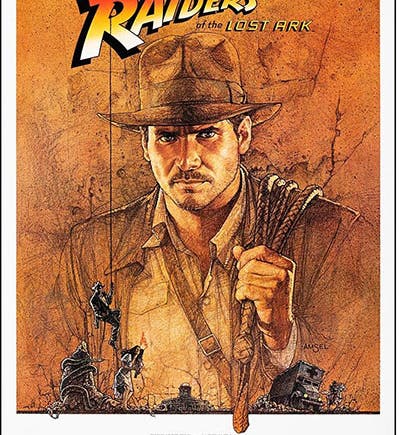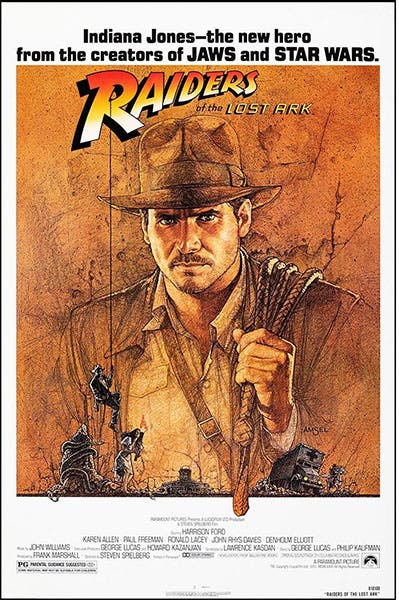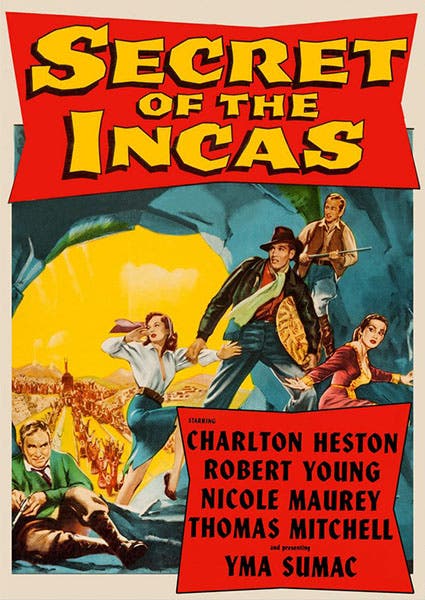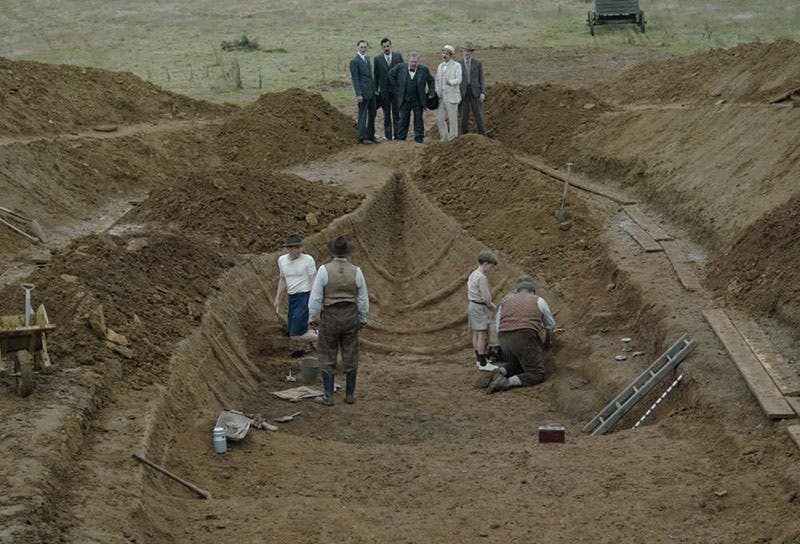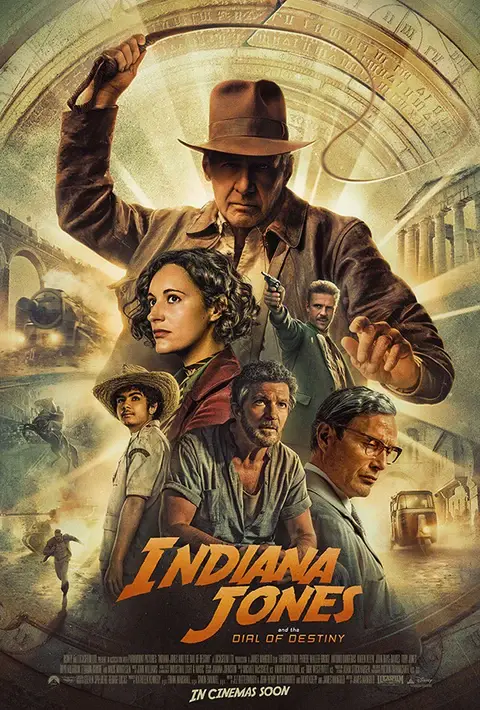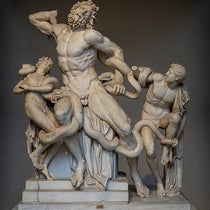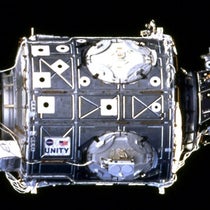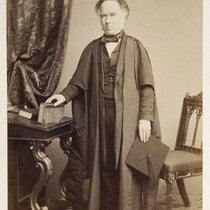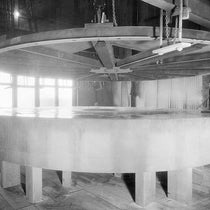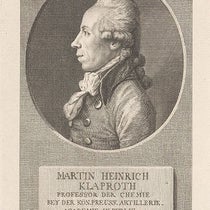Scientist of the Day - Indiana Jones
Indiana Jones, archaeologist and adventurer extraordinaire, leapt from the screen on June 12, 1981, as Raiders of the Lost Ark was released in theaters across the United States. As played by Harrison Ford, Indiana Jones was a captivating figure, and the film was a blockbuster success, generating four sequels, and inspiring a number of similar archaeology-adventure films, such as Lara Croft, Tomb Raider (2001), with Angelina Jolie as the title heroine, and National Treasure (2004), with Nicolas Cage as Benjamin Franklin Gates, and their sequels.
The anniversary of "Indy" inspires us to ask: who is the "best" fictional archaeologist in the history of cinema? We put “best” in quotations because it is a highly malleable term here; we would think it would include "well-acted" and "accurate" and “memorable” at the very least. The problem with most film archaeologists, such as Indy, is that they don't act much like archaeologists – they careen through sites, destroy evidence, fail to record the original positions of anything, and act more like looters than scientists – which, of course, is what they are, and why their films are such fun to watch. But has Hollywood ever given us an archaeologist that an archaeologist could like? Some point to Peter O'Toole's portrayal of Lawrence of Arabia in the 1962 film of that title, but that seems a bit forced, for while T. E. Lawrence was an archaeologist, the film has nothing to do with archaeology. One might go back to an even earlier generation of films and look at Charleton Heston's portrayal of Harry Steele, in the film Secret of the Incas (1954), but Harry Steele was no better than Indiana Jones at adhering to sound archaeological practice.
Until recently, that left us with really only one nominee: The Body (2001), starring Antonio Banderas and Olivia Williams. The plot of this film revolves around a tomb unearthed in Jerusalem that contains a body of a crucifixion victim that might possibly be that of Jesus Christ, which would be bad news for Christians everywhere. Banderas is the Vatican priest sent to investigate, and Williams plays Sharon Golban, the Israeli archaeologist who excavated the tomb. Dr. Golban is really very good at her job. She treats the archaeological site with respect; studies bones and objects in place and doesn't just yank them from their matrix; and uses sophisticated analytic techniques, such as thermoluminescence, to date the objects that she finds. She represents the profession of archaeology very well and makes Lara Croft and Benjamin Gates look like bumbling idiots. Unfortunately, the rest of the movie doesn't measure up to Dr. Golban; the political conflict begins to weigh it down, and it rather falls apart at the end. It is in truth a mediocre movie. Raiders of the Lost Ark is much more enjoyable, even if it teaches bad habits to would-be archaeologists. As always in life, the most valuable lessons come in a mixed bag.
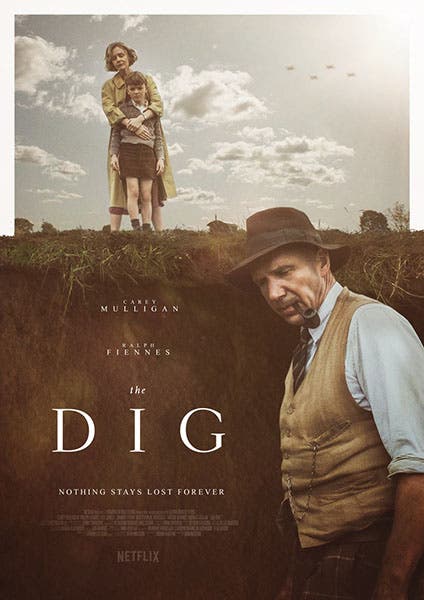
Movie poster, The Dig, starring Ralph Fiennes and Carey Mulligan, 2021 (https://posterspy.com)
That was pretty much the extent of the competition for "film that most accurately depicts an archaeologist" until 2021. In that year, Netflix released The Dig, a "based-on-actual-events" movie about the discovery of the Sutton Hoo ship burial, dating from Anglo-Saxon times, and found in Suffolk, England, in 1939. Ralph Fiennes plays Basil Brown, an excavator at the Ipswich Museum who is offered leave so that he might work for Edith Pretty, a local landowner (played by Carey Mulligan), who has some mounds on her property that she would like investigated. Brown carefully uncovers an impression of a large ship, with iron rivets intact. The archaeological authorities then move in and take over the excavation, although Brown is allowed to remain onsite, as the familiar Sutton Hoo artifacts are slowly uncovered. Much of the plot revolves around the class differences between diggers and archaeologists, and we won’t reveal any more of the plot here. But it all seems quite realistic, perhaps because the producers and actors worked closely with the British Museum, where the Sutton Hoo artifacts are preserved, thanks to an incredibly generous gift from Mrs. Pretty.
Has any film appeared since 2021 that can rival The Dig as the top archaeology movie of all time? Well, Indiana Jones and the Dial of Destiny was released in 2023, and should you really believe that Archimedes built the Antikythera mechanism, that you could break it apart and snap it back together 2000 years later and use it to find cracks in the fabric of time, if that seems plausible to you, then yes, I can see why you might vote for it over The Dig, since it has a lot more death-defying action. Otherwise, I am afraid it is no contest. If you haven’t seen The Dig, check it out on Netflix and form your own opinion. And, of course, if I have missed an archaeology film that deserves to be on the final ballot, please let me know. I know at least one of you will suggest Bubba-Ho-Tep (2002). That suggestion has already been considered, and rejected. Other nominations are welcome.
William B. Ashworth, Jr., Consultant for the History of Science, Linda Hall Library and Associate Professor emeritus, Department of History, University of Missouri-Kansas City. Comments or corrections are welcome; please direct to ashworthw@umkc.edu.

